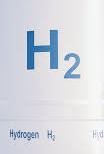
World’s Largest Class Spherical Liquefied Hydrogen Storage Tank
Kawasaki Heavy Industries, Ltd. announced its completion of the basic design for an 11,200 m3 (10,000 m3 storage capacity) spherical liquefied hydrogen storage tank, which will be one of the world’s largest of its kind. It will be used to reliably store, for long periods of time, a large amount of cryogenic liquefied hydrogen reduced to a temperature of –253°C (–423.4°F) and one eight-hundredth its initial volume. In response to the increasingly widespread use of hydrogen, Kawasaki will make efforts to propose this storage tank to industrial gas companies, energy providers and other such organizations.
Hydrogen is a clean energy source that emits no greenhouse gases during use in power generation, fuel cell vehicles (FCVs) and other such applications. Annual usage of this energy source is expected to increase to approximately 300,000 tons by around 2030,*1 which means that developing related storage facility technologies and making infrastructure changes will be important moving forward.

liquefied hydrogen storage tank
Kawasaki’s newly designed storage tank features a double-shell vacuum-insulation structure, comprising inner and outer shells with a vacuum-sealed layer in between to prevent thermal conduction from the outside air and convective heat transfer. Additionally, the tank adopts a spherical design—the best shape for reducing heat input—in order to achieve high-level thermal insulation and minimize gas evaporation (BOR*2) to the greatest extent possible. Because liquefied hydrogen is more than 10 times more susceptible to the effects of heat than liquefied natural gas (LNG), it is vital that storage tanks for the former adopt high-precision designs incorporating sophisticated manufacturing technologies to ensure excellent thermal insulation performance.
In the 1980s, Kawasaki constructed 600 m3 (540 m3 storage capacity) liquefied hydrogen storage tanks for use at the Tanegashima Space Center operated by NASDA (now part of JAXA)3 and carried out related maintenance and operations for more than 30 years. Furthermore, the company designed and constructed a 2,500 m3 (2,250 m3 storage capacity) liquefied hydrogen storage tank on Kobe Airport Island in 2020,4 which helped strengthen the company’s design and manufacturing technology foundations. For this latest project,
Kawasaki utilized a wide array of liquefied-hydrogen-related technologies and knowledge accumulated over the years to complete the basic design for one of the world’s largest storage tanks of its kind and expand its lineup of spherical liquefied hydrogen storage tanks.
Information Source: Read More…..
Press release by:



